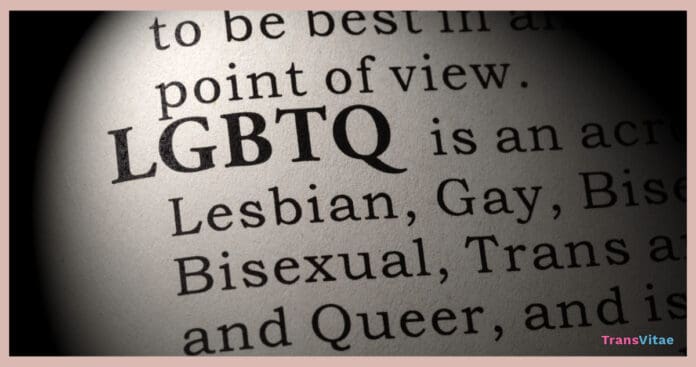Being an effective ally to the LGBTQ+ community begins with understanding and respecting the rich tapestry of identities and experiences it encompasses. Language plays a vital role in this journey, as it evolves alongside our understanding of gender and sexuality. Let’s delve deeper into some key terminology, exploring their nuanced meanings and significance.
Sexual Orientations: The Spectrum of Attraction
Sexual orientation refers to the enduring pattern of emotional, romantic, and/or sexual attraction that a person feels towards others. It’s a spectrum, not a binary, and encompasses diverse experiences beyond the familiar categories of “straight” and “gay.”
- LGBTQ+: An acronym for “lesbian, gay, bisexual, transgender, and queer,” with the “+” sign encompassing other identities like intersex, asexual, and more. It serves as an umbrella term for the diverse community of individuals who identify with these orientations and identities.
- Homosexual: An older term, less commonly used today, referring to attraction to the same sex. Many prefer the terms “gay” or “lesbian.”
- Gay: Typically refers to men attracted to men, but can also be used as an umbrella term for same-sex attraction.
- Lesbian: Women attracted to women.
- Bisexual: Attraction to both men and women.
- Pansexual: Attraction to people regardless of gender identity or expression.
- Asexual: Lack of sexual attraction to anyone. Asexuality is a spectrum, with some individuals experiencing romantic attraction but not sexual attraction.
- Demisexual: Only experiencing sexual attraction after forming a close emotional bond.
- Graysexual/Grayromantic: Individuals who experience sexual/romantic attraction infrequently or with low intensity.
- Omnisexual: Similar to pansexual, but acknowledges the importance of gender in attraction while not limiting it to the binary.
- Skoliosexual: Attraction to non-binary people.
Understanding the diversity of sexual orientations allows us to appreciate the richness of human connection and love.
Gender Identities: Beyond the Binary
Gender identity is a person’s internal sense of being male, female, both, neither, or somewhere else along the gender spectrum. It’s distinct from biological sex assigned at birth and can encompass a wide array of experiences.
- Agender: Not identifying with any gender.
- Bigender: Identifying as two genders, either simultaneously or fluctuating between them.
- Genderfluid: Experiencing a gender identity that shifts over time or depending on context.
- Genderqueer: A non-binary gender identity that may be outside of or challenge the traditional male/female binary.
- Enby: Short for “non-binary,” encompassing gender identities outside of the male and female binary.
- Transgender: A person whose gender identity differs from the sex assigned to them at birth.
- Transmasculine (Transmasc): A person assigned female at birth who identifies more with masculinity.
- Transfeminine (Transfem): A person assigned male at birth who identifies more with femininity.
- Cisgender: A person whose gender identity aligns with the sex assigned to them at birth.
- Two-Spirit: A term used by some Indigenous people in North America to describe a person who embodies both masculine and feminine spirits.
Recognizing that gender is not a simple binary opens doors to understanding and affirming the experiences of countless individuals.
Additional Terms: Navigating the Landscape
Beyond sexual orientations and gender identities, a plethora of terms exist to describe experiences related to gender, sexuality, and allyship. Here’s a look at a few:
- Queer: Historically used as a slur, this term has been reclaimed by some as an umbrella term for LGBTQ+ identities. However, it remains controversial and should only be used when preferred by the individual.
- Intersex: Born with variations in sex characteristics that don’t fit typical definitions of male or female.
- AFAB/AMAB: Assigned female/male at birth. These terms are useful to describe biological sex without making assumptions about gender identity.
- TERF: Acronym for “trans-exclusionary radical feminist,” a term used for a small group opposing transgender rights.
- Heterosexual: Attracted to the opposite sex.
- Heterophobia: Prejudice or discrimination against heterosexual people.
- Ally: A person who is not LGBTQ+ but actively supports the community through advocacy and education.
- Coming Out: The process of disclosing one’s LGBTQ+ identity to others.
- Deadnaming: Using a transgender person’s birth name (which they no longer use) without their permission.
- Gender Dysphoria: The distress experienced when one’s gender identity does not match their assigned sex at birth.
- Misgendering: Using incorrect pronouns or language to refer to someone’s gender identity.
- Non-Binary: An umbrella term for gender identities that are not exclusively male or female.
- Passing: When a transgender person is perceived as cisgender (the gender they identify with).
- Pronouns: Words used to refer to people (e.g., he/him, she/her, they/them). It’s important to ask and use the pronouns a person prefers.
- Transition: The process of changing one’s gender expression or physical characteristics to align with their gender identity. This can include social, legal, and medical aspects.
Understanding these terms helps us navigate conversations about LGBTQ+ issues with sensitivity and awareness.
Why Inclusive Language Matters: The Power of Words
Language is a powerful tool that can either uplift or harm. Using respectful and accurate terminology is crucial to creating an inclusive environment where everyone feels seen, heard, and valued. It’s about acknowledging the diversity of human experiences and showing empathy towards those whose identities differ from our own.
Remember:
- The definitions provided are simplified. Individual experiences are unique and complex.
- Always use the terms people prefer for themselves. When unsure, ask politely.
- Be open to learning and adapting your language as needed.
By educating ourselves and engaging in open, respectful conversations, we can contribute to a more inclusive society where everyone can thrive.
Please Note: This article will be updated over time to provide additional definitions and terms. If you have any suggestions for additions, please let us know in the comment section below.


